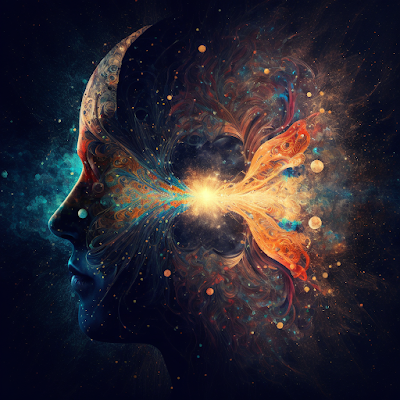The Dark Matter Puzzle: What is it and What is its Identity?
Introduction
Dark matter
is a fascinating subject in astrophysics that has puzzled scientists for
decades. Despite comprising 85% of the total mass of the universe, dark matter
is elusive and invisible to the naked eye. In this blog post, we will explore
the concept of dark matter, its properties, and the various theories proposed
to explain its existence. We will also discuss the attempts made to detect dark
matter and its role in the formation and evolution of galaxies and the
universe.
What is Dark Matter?
Dark matter
is an invisible and mysterious substance that makes up a significant portion of
the total mass of the universe. Its existence is inferred through its
gravitational effects on visible matter, such as stars and galaxies. The
concept of dark matter was first proposed in the 1930s by Swiss astronomer
Fritz Zwicky, who observed that the mass of galaxy clusters was not sufficient
to account for the gravitational forces holding them together.
Theories of Dark Matter
Various
theories have been proposed to explain the nature of dark matter. One popular
theory is that dark matter is composed of weakly interacting massive particles
(WIMPs) that interact only through gravity and the weak nuclear force. Another
theory is that dark matter is made up of axions, which are extremely light
particles that interact very weakly with other matter.
Attempts to Detect Dark Matter
Scientists
have made several attempts to detect dark matter directly, including
underground experiments such as the Large Hadron Collider and the XENON experiment.
Despite these efforts, dark matter has not been directly detected. However,
scientists remain optimistic that it will be discovered in the future.
Role of Dark Matter in the Universe
Dark matter
is not only present in galaxy clusters but also plays a crucial role in the
formation and evolution of galaxies. Computer simulations demonstrate that the
gravitational effects of dark matter can help explain the observed structure of
galaxies, such as the spiral arms of spiral galaxies. Dark matter is also
thought to have played a key role in the initial formation of galaxy clusters
and superclusters and continues to play a role in the ongoing formation and
evolution of these structures.
Conclusion
Despite the
many attempts to detect and understand dark matter, it remains one of the
greatest mysteries in science. Its properties and true nature may not be fully
understood until new technologies and techniques are developed that allow for
its direct detection and study. The elusive nature of dark matter has only
intensified scientists' curiosity and determination to uncover its secrets.
Understanding dark matter's role in the universe is crucial to understanding
the formation and evolution of galaxies and the universe itself.














Comments
Post a Comment